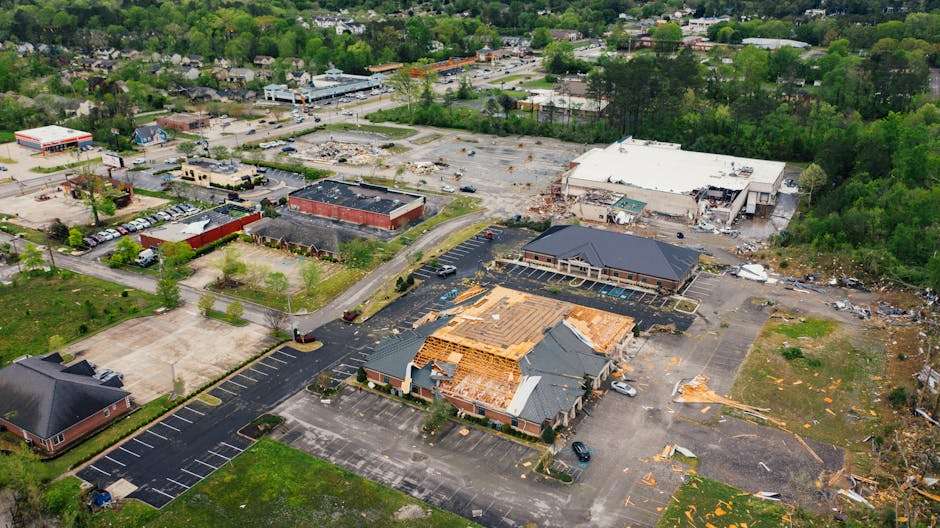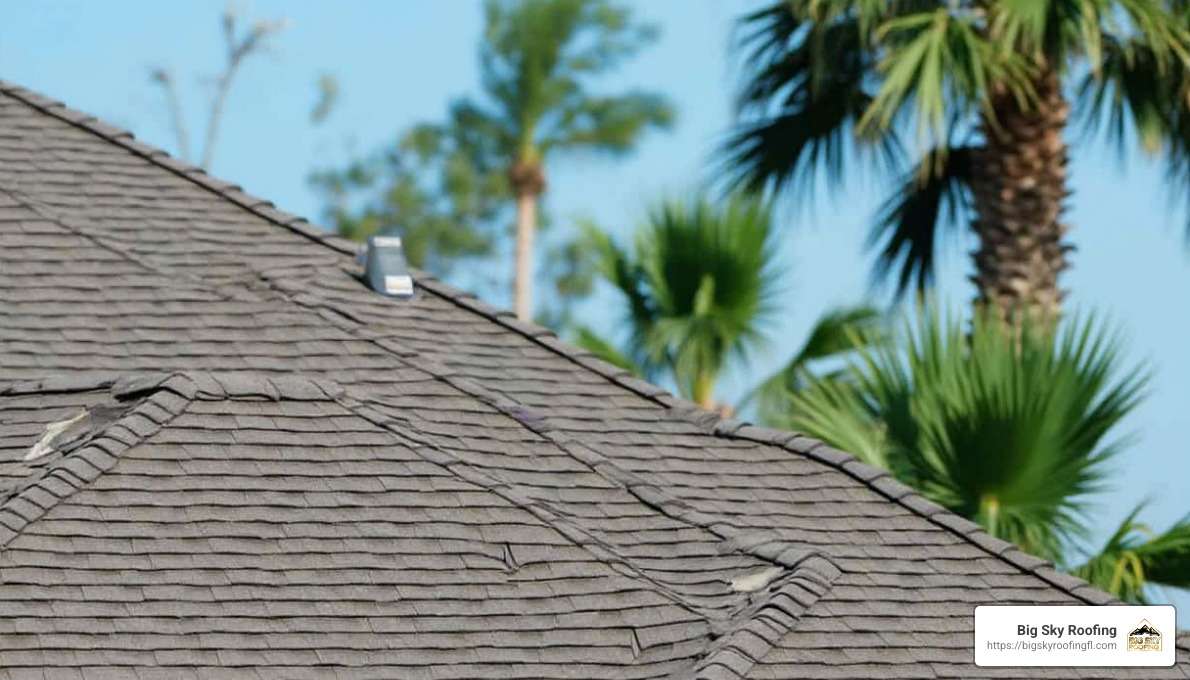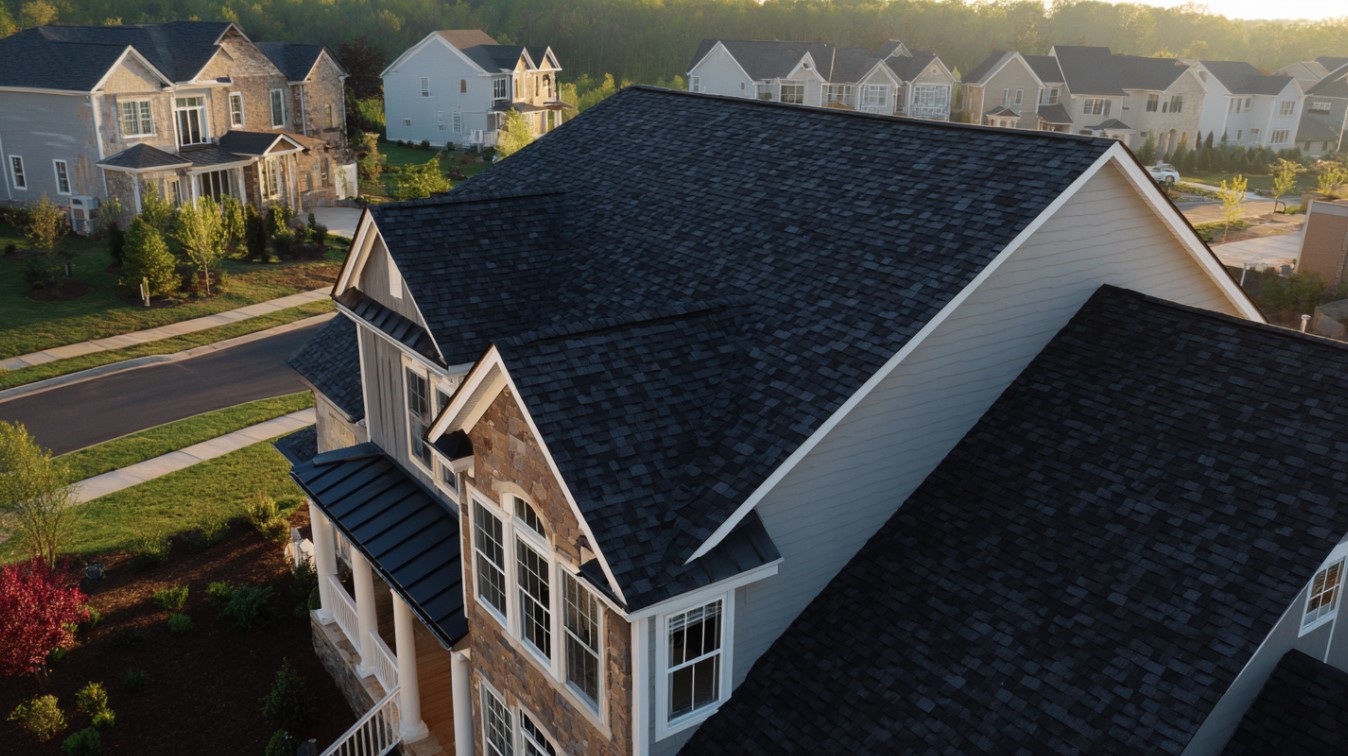Roof Revival: Comprehensive Steps to Restore Wind Damage
•
Written By
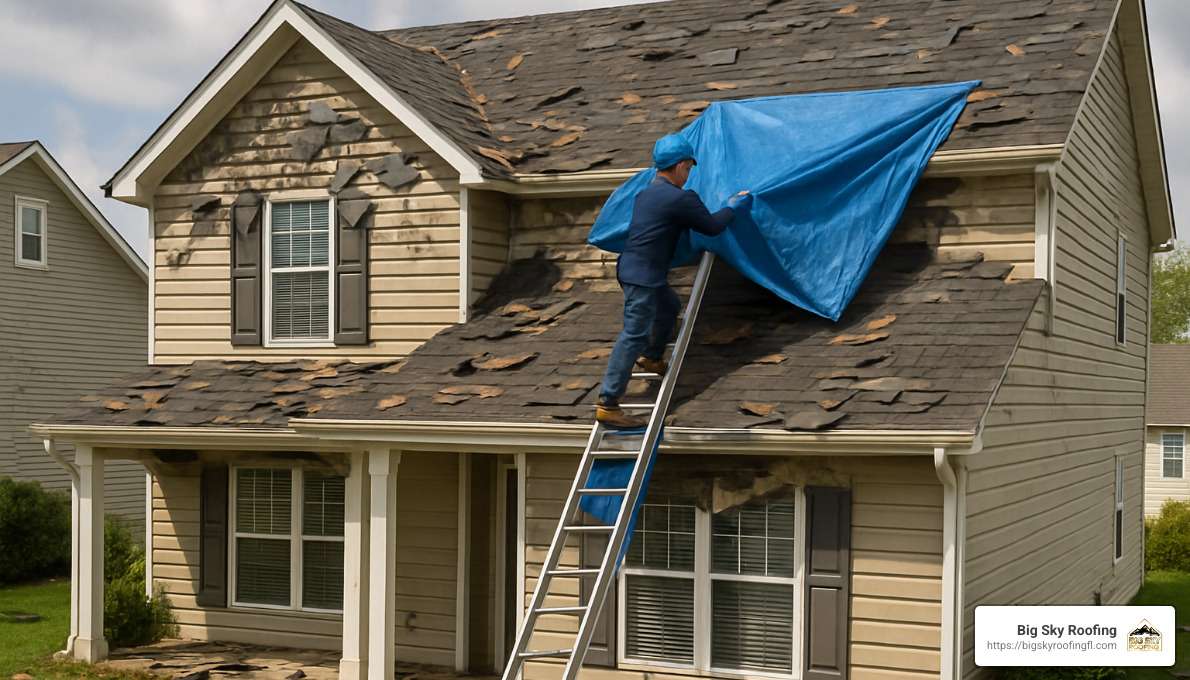
When the Wind Leaves Its Mark: Understanding Roof Damage
Florida’s powerful storms can leave your home vulnerable, especially your roof. If you’re facing wind damage roof restoration needs after a storm has swept through, knowing what to do next is crucial for protecting your home and your peace of mind.
When those Central Florida winds kick up, your roof takes the brunt of nature’s fury. Even winds as low as 45 mph can begin damaging your shingles, with serious problems developing at 58 mph – speeds commonly experienced during thunderstorms in Sumter, Lake, Citrus, Hernando, Orange, and Marion counties.
“Your roof is your home’s first line of defense against the elements,” explains roofing expert Mark Thompson. “When wind compromises that defense, addressing it quickly can prevent thousands in additional damage.”
What makes wind damage particularly tricky is its subtle nature. Unlike a fallen tree crashing through your ceiling, wind damage often works silently. Strong gusts create pressure differences that literally lift your shingles, breaking seals and creating entry points for water. Your roof’s edges and corners are especially vulnerable, as wind forces attack these areas first and most aggressively.
Immediate action after a storm is essential. Securing tarps over damaged areas can prevent water intrusion while you document everything with photos for your insurance claim. Then, calling a professional roofer for a thorough assessment becomes your next priority.
The telltale signs of wind damage include missing or curled shingles, granules collecting in your gutters (a sign your shingles are deteriorating), lifted flashing around chimneys or vents, and those dreaded water stains appearing on interior ceilings.
The restoration process involves more than simply replacing a few shingles. A comprehensive approach includes professional assessment, detailed documentation for insurance purposes, and repair or replacement of all damaged components. Depending on severity, timelines vary from 1-3 days for minor repairs to 1-7 days for complete restoration, with costs typically ranging from $350-$1,200 per roofing square (100 square feet).
Wind damage roof restoration isn’t something to postpone. The longer damaged areas remain exposed, the greater your risk of water intrusion, mold growth, and structural deterioration that can turn a simple repair into a major expense.


In the following sections, we’ll guide you through everything from safely assessing damage to working with insurance and selecting the right contractor to restore your roof to its pre-storm condition. With the right approach, you can steer this challenge with confidence and ensure your home stays protected for years to come.
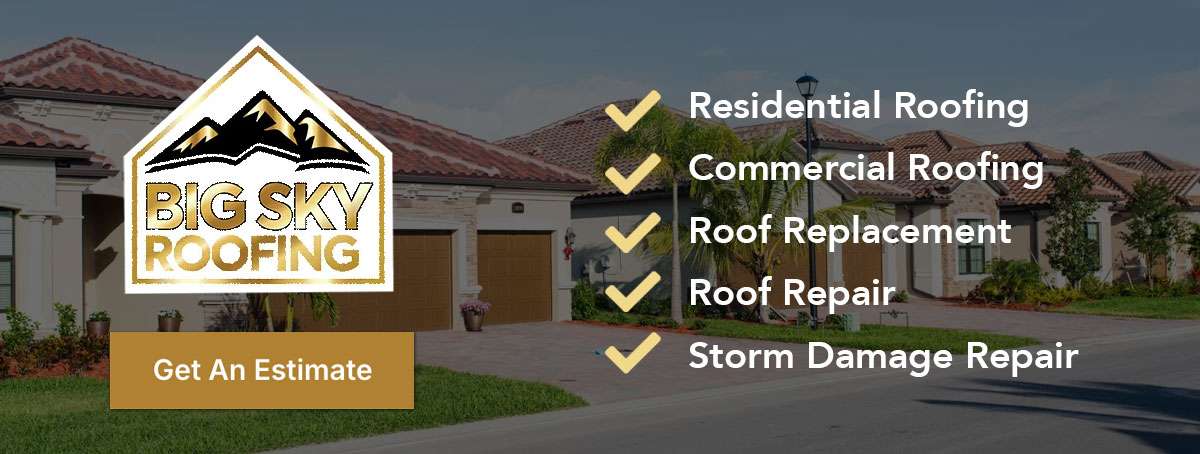
Essential wind damage roof restoration resources:
– Can I claim for storm damage to my roof
– How to claim storm damage to a roof
– Storm damage roofing
Understanding Wind Damage & Its Warning Signs
Wind damage to your roof isn’t always as dramatic as a tree crashing through your ceiling. In fact, the most dangerous wind damage can be subtle and go unnoticed until water starts dripping onto your dining room table during the next rainstorm.
According to the National Weather Service, wind speeds as low as 45-57 mph can begin to damage shingles, especially if they’re older or were improperly installed. Once winds reach 58-74 mph, more substantial damage occurs, including potential shingle loss even on well-installed roofs. At 75+ mph, widespread structural damage becomes likely.
“Most roofs in Florida are designed to withstand wind speeds up to 110 mph,” notes our lead inspector at Big Sky Roofing. “But that rating assumes perfect installation and materials in good condition. An aging roof might start failing at much lower speeds.”
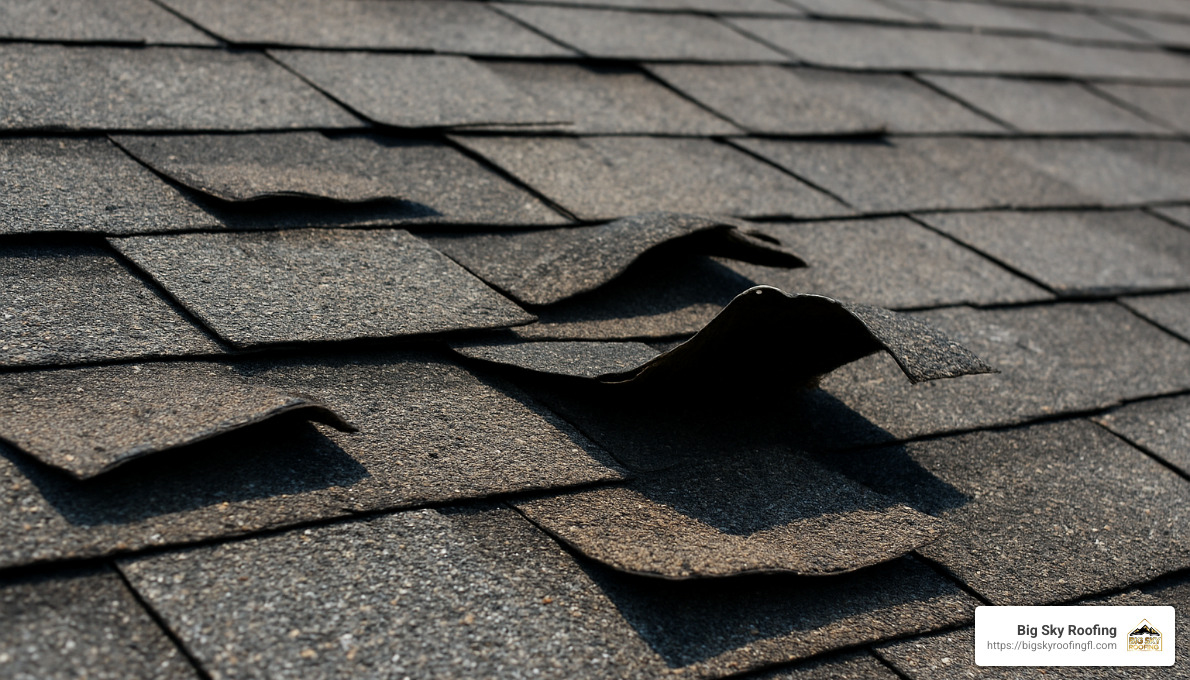

Why & How Wind Damages a Roof
Wind doesn’t push uniformly against your roof—it creates complex pressure zones. As wind flows over your roof, it creates uplift pressure (similar to how airplane wings generate lift). This negative pressure literally sucks shingles upward, breaking their seal and potentially tearing them away entirely.
The physics behind wind damage roof restoration explains why certain areas of your roof are more vulnerable. Your roof edges and corners experience the highest uplift pressures, which is why damage often begins at the perimeter. Ridges and peaks catch wind directly, creating pressure differentials that can lift materials. Even minor pre-existing issues like loose nails or sealant failure become major vulnerabilities during high winds.
Age is another critical factor. As shingles age, they become brittle and less flexible, making them more susceptible to wind damage. That’s why homes in Sumter County and Lake County with older roofs often sustain more damage during identical storm conditions than newer roofs in the same neighborhood.
Wind damage is also cumulative. Your roof might survive one 50 mph windstorm without visible damage, but repeated exposure to these conditions gradually weakens adhesives and fasteners, making future failure more likely. This is especially true in areas like Citrus County and Hernando County, where afternoon thunderstorms can deliver repeated wind events throughout the summer.
Common Red Flags After a Storm
After a significant wind event in Central Florida, be on the lookout for these telltale signs of roof damage:
When shingles break their seal but don’t detach completely, they often curl upward. This creates an entry point for water. The most obvious sign is missing shingles—look for bare spots on your roof or shingles scattered in your yard after storms roll through Orange County or Marion County.
Check your gutters and downspouts for granule accumulation (they look like coarse, dark sand). This indicates shingle deterioration that may require wind damage roof restoration. Wind can also cause shingles to fold and crease, weakening them even if they remain attached.
“One of the most overlooked signs is what we call ‘shingle flapping,'” explains our restoration team leader. “If you hear a flapping sound during windy conditions, that’s a shingle that’s already broken its seal and is just waiting to tear off completely.”
Metal flashing around chimneys, vents, and valleys is particularly vulnerable to wind lift. If you notice yellow or brown water stains on ceilings or walls, these often indicate roof leaks from wind damage. During your next attic visit, look up—if you can see daylight through roof boards, you have a serious problem requiring immediate attention.
After thunderstorms or hurricanes, finding pieces of your roof like ridge caps or vent covers in your yard is a clear indication that your roof has sustained wind damage. Don’t wait for the next rain to confirm your suspicions—early intervention can save thousands in interior damage and extend the life of your roof.
Safe Self-Inspection & Immediate Mitigation Steps
When the storm clouds roll away, your natural instinct might be to grab a ladder and climb up for a closer look at your roof. But hold that thought! While professional assessment is essential, there are safer ways to check for wind damage roof restoration needs without risking life and limb.
Post-Storm Checklist for Homeowners in Central Florida
Here in Central Florida, where summer thunderstorms can pack quite a punch, we recommend using what we call the I.O.U. method for a thorough yet safe self-inspection:
Inside: Start where it’s safest—inside your home. During daylight hours, grab a flashlight and head up to your attic. Look for pinpoints of light coming through the roof deck (a sure sign of trouble). While you’re indoors, scan your ceilings and walls for fresh water stains or discoloration. That yellowish-brown spot wasn’t there before? That’s your roof trying to tell you something. Don’t forget to use your nose—musty odors often signal moisture that’s found its way inside.
Outside: Take a leisurely walk around your property, keeping your eyes peeled for roofing materials that should be on your roof, not decorating your lawn. Check your gutters and downspouts for what looks like dark, coarse sand—these are granules from your shingles, and finding them in abundance after a storm is concerning.
Up the ladder (with caution): If you’re steady on your feet and have a secure ladder, you can get a closer look—but please, stay on the ladder! Never walk on a potentially damaged roof. From your ladder vantage point, scan for shingles that are curled, lifted, or missing altogether. Pay special attention to flashing around chimneys and vents, as these areas are particularly vulnerable.
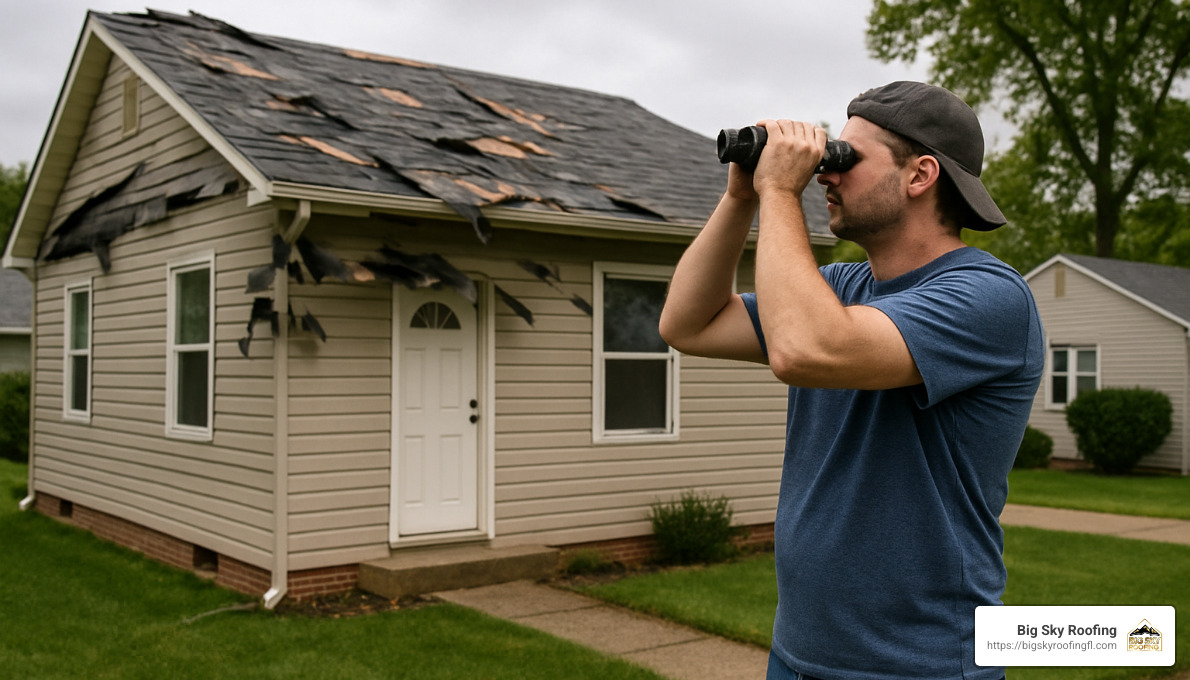

Don’t have a ladder or prefer to keep both feet firmly on the ground? A good pair of binoculars can be your best friend for roof inspections. Many of our customers in Marion and Lake counties have even acceptd technology, using drones to capture roof images—just remember to follow local regulations if you go this route.
Document everything you see with clear photos from multiple angles. Most smartphones timestamp photos automatically, which can be invaluable for insurance claims. For more detailed guidance on what to look for, our roof inspection checklist for Florida provides a comprehensive framework.
First 24-Hour Actions if Damage Is Suspected
If your inspection reveals potential problems, the clock starts ticking. The first 24 hours after finding wind damage are critical for preventing a bad situation from becoming worse.
Safety first is more than a slogan—it’s your priority. If you spot severe structural damage or collapsed areas, please get everyone out of the house and call professionals immediately. This isn’t the time for heroics.
When dealing with active leaks, minimize interior damage by placing buckets under drips and moving furniture and valuables away from vulnerable areas. Water and electricity don’t mix, so if leaks are near electrical fixtures, turn off electricity to those areas at your breaker box.
“The most common mistake I see homeowners make is using nails to secure temporary tarps,” shares our restoration specialist. “Those extra holes just create new entry points for water.” Instead, cover damaged areas with a sturdy tarp secured with boards or sandbags for temporary tarping that won’t cause additional harm.
Before you touch anything, document everything. Take extensive photos and videos that clearly show all damage. Your insurance company will need this evidence, and so will your roofing contractor.
Time to contact professionals. At Big Sky Roofing, we offer emergency roofing services throughout Sumter, Lake, Citrus, Hernando, Orange, and Marion counties, prioritizing urgent situations to prevent further damage to your home.
Don’t forget to notify your insurance company promptly, but here’s a pro tip from our claims specialist who witnessed the aftermath of Hurricane Irma in Citrus County: “Don’t commit to any settlement until a professional has fully assessed the damage. Some of the worst situations I’ve seen were homeowners who attempted DIY fixes that actually invalidated their insurance claims.”
Your job in these first critical hours is to focus on safe, temporary measures that stabilize the situation. Leave the permanent wind damage roof restoration to professionals who know exactly what your Central Florida home needs to weather the next storm.
Professional Assessment & Documentation
After your initial inspection, it’s time to bring in the experts. Think of your roof like a patient who needs a proper diagnosis – your observations are helpful, but a professional assessment is crucial for effective wind damage roof restoration.
When our team at Big Sky Roofing arrives at your Central Florida home, we don’t just glance at your roof and write up an estimate. We perform a thorough investigation that goes well beyond what’s visible from your yard.
“What homeowners often miss is the systemic nature of wind damage,” explains our senior inspector. “A few missing shingles might seem like a simple repair, but wind that was strong enough to tear off shingles may have also compromised the underlayment or created nail pops throughout the roof.”
Our comprehensive assessment includes climbing up to examine every inch of your roof, checking your attic for structural issues, using moisture meters to detect hidden water damage, and often deploying drone technology to capture detailed aerial imagery. We’re looking at everything – not just shingles, but also underlayment, decking, flashing, vents, and gutters.
This thorough approach is especially important in areas like Lake and Marion counties, where summer thunderstorms can create hidden damage that might not show up as leaks until months later.
The documentation we provide serves a dual purpose: guiding our restoration plan and supporting your insurance claim. After major storms in Citrus or Hernando counties, we’ve seen how crucial proper documentation can be in getting claims approved quickly.
For particularly complex situations, especially after major storm events in Orange or Sumter counties, you might consider working with a public adjuster – an independent insurance professional who represents your interests rather than the insurance company’s. They can be invaluable allies when there’s disagreement about damage extent or coverage.
For more information on navigating the often-confusing claims process, check out our guide on how to claim storm damage to a roof.
Inspection Reports & Photo Evidence for Insurance
A professional inspection report isn’t just paperwork – it’s your evidence. Our wind damage roof restoration documentation includes everything your insurance company needs to process your claim efficiently.
Your detailed report will contain a comprehensive scope of damage with every affected component itemized clearly. We provide our professional determination of cause – specifically whether wind was responsible for the damage, which is critical for insurance coverage.
The report includes high-resolution photographs documenting all damage points from multiple angles. These images, along with our expert narrative, create a clear picture for adjusters who may be handling dozens of claims after a major storm.
We also provide clear recommendations on whether repair or replacement is the most appropriate solution, along with detailed cost estimates that break down materials and labor. This transparency helps both you and your insurance company understand exactly what’s needed.
“Insurance adjusters rely heavily on professional documentation,” notes our claims specialist. “The more thorough your contractor’s report, the smoother your claims process will be.”
After major weather events, it’s also worth checking if your area has been declared a disaster zone by visiting FEMA disaster resources. This designation can affect both your claim process and what additional assistance might be available to you.
Thorough documentation isn’t just about getting your claim approved – it’s about ensuring your home receives the complete restoration it needs to protect your family for years to come.
Wind Damage Roof Restoration: From Repair to Full Re-Roof
When the assessment phase concludes, the actual wind damage roof restoration work begins. Depending on what Mother Nature did to your roof, this could mean anything from fixing a few shingles to installing a completely new roof system.
Wind Damage Roof Restoration: Step-by-Step Timeline
Wondering what happens when we restore your storm-damaged roof? Here’s the typical journey from damage to resolution:
Day 1: Final Assessment and Planning
Our team conducts a thorough inspection, helps you select the right materials, creates a detailed work plan, and schedules our crew. This careful planning ensures nothing gets overlooked.
Day 2-3: Preparation and Tear-Off (if needed)
Materials arrive at your home, and we take steps to protect your landscaping and exterior features. If necessary, we’ll remove damaged materials and inspect the decking underneath to check for hidden problems.
Day 3-5: Restoration Work
This is where the change happens. We repair or replace damaged decking, install new underlayment and water barriers, apply new roofing materials, and install all the critical components like flashing and vents that keep water out.
Day 5-6: Completion and Clean-Up
We finish the detail work like ridge caps, thoroughly clean up the site (including a magnet sweep for nails), and conduct a quality inspection. Your property will look like we were never there—except for that beautiful new roof!
Day 7: Final Walk-Through
We’ll walk through the completed project with you, provide all documentation for warranty and insurance purposes, and share some helpful tips on maintaining your newly restored roof.


“The timeline can vary depending on weather and damage extent,” explains our project manager. “Minor repairs might wrap up in just 1-3 days, while complete replacements after serious storm damage typically take 5-7 days.”
In places like Hernando and Sumter counties, where afternoon thunderstorms are practically a summer tradition, we carefully schedule work around weather forecasts. No one wants rain in the middle of their roof restoration!
Choosing Materials for Wind Damage Roof Restoration
Selecting the right materials isn’t just about aesthetics—it’s about ensuring your roof can stand up to the next big storm. For Central Florida’s unique climate, we typically recommend:
For asphalt shingle roofs, we suggest impact-resistant shingles with a Class 4 rating and improved adhesive strips that resist wind uplift. We use a six-nail installation pattern (exceeding standard requirements) along with starter strips at all eaves and rakes.
Metal roof restorations benefit from standing seam panels with concealed fasteners, wind-rated clips, improved ridge and edge details, and proper underlayment systems. These systems excel at handling Florida’s wind events.
Tile roof owners should consider proper hurricane clips or foam adhesion, improved underlayment with sealed seams, properly installed valley metals, and securely fastened ridge caps. Tile is beautiful but needs extra attention in high-wind areas.
“After Hurricane Irma swept through, we noticed a big shift in what homeowners wanted,” our materials specialist shares. “Many folks in Orange and Marion counties now choose to upgrade to more wind-resistant options during restoration, even when insurance only covers basic replacements.”
Minor Repairs vs. Full Replacement
One of the biggest decisions you’ll face is whether to repair or replace your damaged roof. Here’s how we help you decide:
Repairs make sense when damage is isolated to one specific area, your roof is relatively young (under 10 years), the underlying structure remains sound, and matching materials are available. This option saves money and time.
Replacement becomes the better choice when damage appears in multiple areas, your roof has reached middle age (10+ years), you’ve already done multiple repairs, or repair costs exceed 30% of replacement. Sometimes investing in a new roof now saves money in the long run.
“We always give our clients the straight truth about whether repair or replacement makes more sense,” our assessment team leader explains. “Even if insurance covers a repair, we might recommend considering a full replacement if your existing roof is nearing the end of its useful life.”
In Lake County, we’ve encountered situations where minor wind damage revealed underlying installation issues that made the roof vulnerable in the first place. In these cases, a simple repair would just be putting a band-aid on a bigger problem.
The right choice ultimately depends on your specific situation, budget, and long-term plans. Whatever you decide, our wind damage roof restoration process ensures your home gets the protection it deserves against Central Florida’s unpredictable weather.
Prevention & Hardening for the Next Storm
After completing your wind damage roof restoration, it’s time to think about how to protect your home from future storms. Living in Central Florida means we’re all too familiar with hurricane season from June through November, plus those year-round thunderstorms that can pack quite a punch.
“The best time to prepare for the next storm is when you’re recovering from the last one,” says our prevention specialist with a knowing smile. “The improvements you make today could save you thousands in repairs tomorrow.”
Let’s look at how you can strengthen your roof against Florida’s challenging weather:
Structural Reinforcements make a world of difference in how your roof handles high winds. Hurricane straps create a secure connection between your roof trusses and walls, preventing the entire roof from lifting during strong gusts. Improved fastening systems for your roof decking ensure those boards stay firmly in place, while secondary water barriers add protection beneath your roofing materials. Don’t forget about reinforced gable ends and bracing – these areas are particularly vulnerable during storms.
Material Upgrades are worth considering if your budget allows. Impact-resistant shingles or tiles stand up better to flying debris, while wind-rated metal roofing systems offer excellent protection. Improved flashing and edge metal help secure those vulnerable roof perimeters, and sealed roof deck systems provide an extra layer of water protection if shingles blow away.
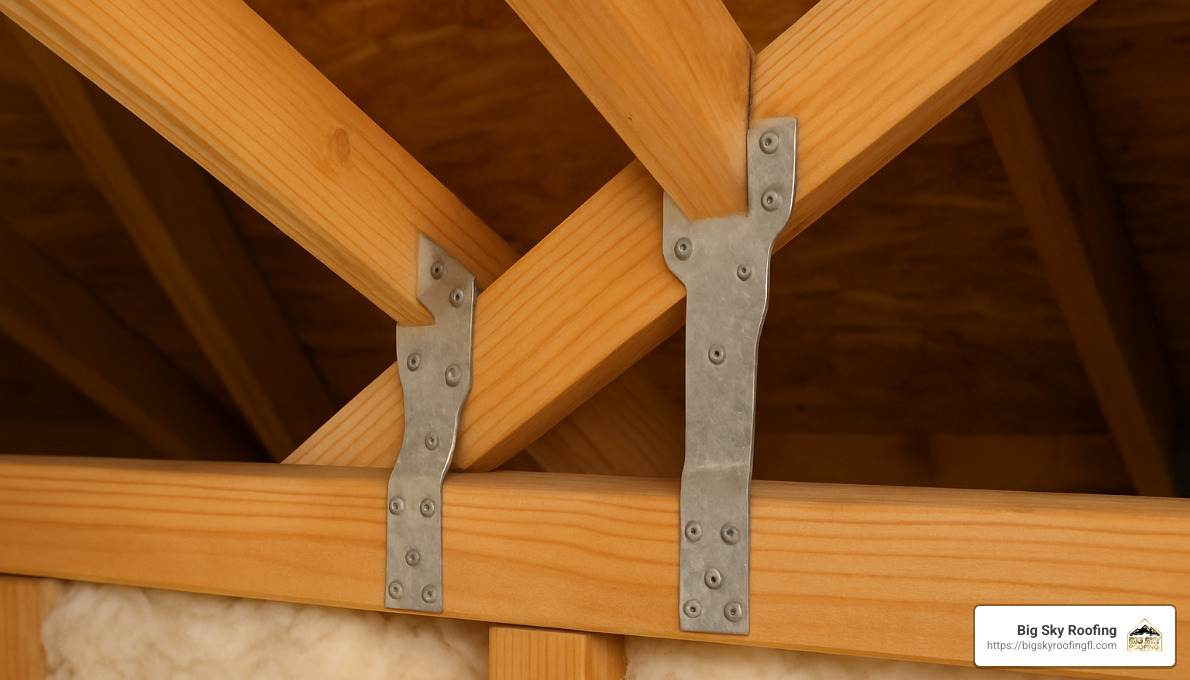

Good Maintenance Practices are perhaps the most affordable way to prevent storm damage. Regular inspections help catch minor issues before they become major problems. That loose shingle or small leak might seem insignificant on a sunny day, but it creates a vulnerable entry point during a storm. Keep trees trimmed away from your roof – those branches can become battering rams in high winds. Clean gutters ensure proper water drainage when you need it most.
Many of these improvements can earn you insurance discounts too – a nice bonus for doing the right thing! Learn more about your options with our guide to Florida roof wind mitigation.
Maintenance Schedule for Sumter, Lake, Citrus, Hernando, Orange & Marion Counties
Central Florida’s unique climate calls for a custom maintenance approach. Here’s a simple schedule that works well for homeowners throughout our service area:
Pre-Hurricane Season (April-May) is the perfect time for a comprehensive roof inspection. Our team can identify and repair minor issues before storm season hits. We’ll also help ensure your gutters and downspouts are clear and functioning properly. This is also when you should trim those trees and secure any loose items around your property that could become projectiles.
Mid-Hurricane Season (August) calls for quick visual checks, especially after any named storms pass through. A quick gutter cleaning might be necessary, particularly in heavily wooded areas. This is also a good time to check for any loose materials or developing issues.
Post-Hurricane Season (December) is when you should schedule another full inspection. Storm season can be tough on roofs, and addressing minor damage promptly prevents bigger problems later. This is also the perfect time to plan for any major maintenance you might need in spring.
“In Citrus County, where tree coverage is often heavier, we recommend more frequent gutter cleaning and tree maintenance,” notes our maintenance specialist. “Meanwhile, in more open areas of Sumter County, we focus more on securing loose items that could become projectiles.”
Every home is different, and local conditions vary even within counties. Homeowners in Lake County’s hilly areas face different challenges than those in flatter parts of Marion County. That’s why we always customize our recommendations based on your specific location and property.
Regular maintenance isn’t just about preventing damage – it’s about peace of mind. There’s nothing quite like the confidence of knowing you’ve done everything possible to protect your home when those storm warnings start scrolling across your screen.
Insurance, Costs & Hiring the Right Contractor
When storms tear through your neighborhood, the aftermath can feel overwhelming. Not only are you dealing with a damaged roof, but now you’re facing insurance paperwork, contractor decisions, and unexpected expenses. Let’s break down what you need to know about the financial side of wind damage roof restoration.
Documentation Tips to Maximize Your Claim
The difference between a fully funded claim and a frustrating battle with your insurance company often comes down to documentation.
Think of your insurance claim like telling a story – you need a clear beginning (the undamaged roof), middle (the storm), and end (the resulting damage). Photos taken before any repairs tell this story better than words ever could. Walk around your property immediately after the storm passes and capture every angle of damage, making sure your photos are date-stamped.
“One Lake County homeowner I worked with last year had her claim initially denied,” shares our claims specialist. “But because she had detailed before-and-after photos plus receipts for emergency tarping, we were able to appeal successfully and get her restoration fully covered.”
Keep every receipt related to your roof damage – from the blue tarp you bought at the hardware store to hotel costs if you needed to relocate temporarily. These expenses are often reimbursable under your policy.
When the insurance adjuster visits, don’t let them inspect alone. Having your roofing contractor present ensures all damage gets properly documented. Our team at Big Sky Roofing knows exactly what adjusters look for and can point out damage that might otherwise go unnoticed.
Understanding your policy before disaster strikes is ideal, but if you’re already dealing with damage, take time now to review your coverage details. Pay special attention to wind deductibles, which in Florida are often higher than your standard deductible.
What to Look for in a Wind Damage Restoration Contractor
After major storms in Central Florida, you’ll suddenly see roofing company signs sprouting up like mushrooms after rain. Unfortunately, not all contractors are created equal, especially when it comes to wind damage roof restoration.
First and foremost, verify proper licensing. Florida requires specific licensing for roofing contractors, and working with an unlicensed contractor can void insurance coverage and leave you vulnerable if something goes wrong. At Big Sky Roofing, we maintain all required state licensing and are happy to provide our license numbers upon request.
Insurance matters too – not just yours, but your contractor’s. Any reputable roofing company should carry both liability insurance and workers’ compensation. This protects you from liability if someone gets injured on your property during the restoration process.
Local reputation speaks volumes. Contractors who’ve weathered multiple storm seasons in Sumter, Lake, Citrus, Hernando, Orange, and Marion counties understand our unique challenges. They’re also more likely to be around if warranty issues arise down the road.
“After Hurricane Irma, we had customers calling us about leaks in roofs installed by out-of-state companies that swooped in, did quick work, and disappeared,” our founder explains. “These ‘storm chasers’ rarely understand Florida’s specific building codes and often cut corners that cause problems later.”
Get everything in writing before work begins. Your estimate should detail all materials, labor costs, and timeline expectations. Vague estimates often lead to unexpected charges later.
Warranty coverage is another crucial factor. A quality wind damage roof restoration should come with both manufacturer warranties on materials and workmanship warranties on installation. Ask specifically how long the workmanship warranty lasts and what it covers.
Finally, choose a contractor who understands the insurance claim process. At Big Sky Roofing, we’ve helped hundreds of homeowners across Central Florida steer their claims, often identifying coverage opportunities they didn’t know existed.
The cost for wind damage repairs typically ranges from $350-$1,200 per roofing square (100 square feet), depending on materials and damage extent. Complete replacements after severe storms usually cost between $10,000-$30,000 for average homes in our service area.
For homeowners in Citrus County dealing with coastal influence or those in inland areas like Marion County facing different storm patterns, having a contractor familiar with your specific region makes a significant difference in both the restoration process and long-term roof performance.
Ready to discuss your wind damage roof restoration needs? Visit our roof repair services page or contact us for a free, no-obligation estimate. And for reference on different wind categories and their potential impacts, the National Hurricane Center wind categories page offers valuable information to understand what your roof might face during future storms.
Frequently Asked Questions about Wind Damage Roof Restoration
How long does wind damage roof restoration usually take?
When facing the aftermath of a storm, timing becomes everything. For wind damage roof restoration, the timeline varies based on the severity of damage and scope of work needed.
Minor repairs like replacing a few shingles or patching small areas typically take just 1-3 days from our initial assessment to job completion. If you need a partial replacement where a section of your roof requires complete restoration, we usually complete these projects in 3-5 days.
For homes needing a complete roof replacement after severe wind damage, the process generally takes 5-7 days for average-sized homes in Lake and Sumter counties.
“Florida’s weather adds another layer of complexity to our scheduling,” explains our operations manager. “During rainy season, especially in Hernando and Orange counties, we build flexibility into our timelines to work around those predictable afternoon thunderstorms.”
It’s worth noting that after major hurricanes or widespread storms, timelines often extend due to high demand and material availability. In these situations, we prioritize emergency tarping and temporary repairs to prevent further damage to your home, then schedule full restoration as quickly as possible. Throughout this process, we maintain clear communication about realistic expectations and any potential delays.
Does homeowners insurance cover all wind damage costs?
Insurance coverage for wind damage roof restoration can be complex, and policies vary significantly throughout Central Florida. Most homeowners insurance policies do cover wind damage, but the devil is in the details.
Standard policies typically cover damage from thunderstorms, but hurricane deductibles may apply for named storms. These hurricane deductibles are usually calculated as a percentage of your home’s value (commonly 2-10%), which can be substantially higher than your regular deductible.
For older roofs, many insurance companies now provide actual cash value (depreciated value) rather than full replacement cost. This means you might receive significantly less than what a new roof costs, especially if your current roof is over 10 years old.
“One detail many Marion County homeowners miss is code upgrade coverage,” notes our insurance specialist. “If your roof was built to older standards, bringing it up to current Florida Building Code may cost extra, and not all policies cover these upgrades.”
We’ve seen noticeable variations in coverage even among neighbors with similar homes in Sumter and Lake counties. If you live in coastal-influenced areas of Citrus County, your policy may have additional limitations or exclusions. We strongly recommend reviewing your policy details before storm season arrives and consulting with your insurance agent about your specific wind damage coverage.
What wind speed starts causing roof shingle failure?
The wind resistance of your roof isn’t a simple number—it’s affected by multiple factors including age, installation quality, and previous maintenance. That said, damage typically begins at these threshold wind speeds:
Wind speeds of 45-57 mph can begin lifting or damaging shingles that are older or weren’t properly installed. This is why proper installation is so crucial for long-term performance.
At 58-74 mph, even properly installed shingles in good condition may sustain damage or be removed entirely. This range is common during severe thunderstorms throughout Central Florida.
Once winds exceed 75 mph, significant shingle loss becomes likely, along with potential structural damage to the underlying roof system.
“What surprises many Orange County homeowners is that their ‘130 mph rated shingles’ can fail at much lower speeds,” our technical specialist points out. “Those ratings represent ideal conditions with perfect installation and brand-new materials. As shingles age and are exposed to Florida’s harsh sun, their wind resistance decreases dramatically.”
Roof geometry also plays a significant role—hip roofs typically perform better in high winds than gable roofs. Additionally, corners and edges of any roof experience higher wind pressures, which is why damage often begins in these areas.
We’ve observed consistent patterns across Hernando and Marion counties showing that regularly maintained roofs withstand significantly higher winds than neglected ones. Even minor previous damage that went unrepaired can create vulnerability points where wind can “grab” and cause progressive failure across larger sections.
Professional installation makes all the difference—proper nailing patterns and placement can be the deciding factor between a roof that survives a storm and one that ends up scattered across your yard.
Conclusion
When storm winds sweep through Central Florida, they often leave behind a trail of roof damage that requires immediate attention. Wind damage roof restoration isn’t just about replacing a few shingles—it’s a comprehensive process that protects your most valuable investment: your home.
Throughout this guide, we’ve walked through every aspect of dealing with wind-damaged roofs, from those first signs of trouble to the completed restoration. As Central Florida residents ourselves, we understand the unique challenges homeowners face across Sumter, Lake, Citrus, Hernando, Orange, and Marion counties. Our team at Big Sky Roofing brings over 25 years of local experience to every project we undertake.
The hours and days after a storm are critical. Acting quickly to document damage and arrange for temporary protection can save thousands in secondary damage. Remember to take plenty of photos before any repairs begin—these will be invaluable for your insurance claim. When selecting a contractor, local experience matters tremendously. Florida’s building codes and weather patterns require specialized knowledge that out-of-state companies simply don’t possess.
While restoring your roof to its pre-storm condition is essential, consider this an opportunity to improve your home’s resilience. Adding wind mitigation features during restoration can significantly reduce the risk of future damage and may even lower your insurance premiums. Once restoration is complete, regular maintenance will extend your roof’s lifespan and strengthen its resistance to future storms.
Whether you’re dealing with a few lifted shingles after a summer thunderstorm or extensive damage following a hurricane, our team stands ready to help. We offer free, no-obligation estimates and work directly with insurance companies to make the restoration process as smooth as possible. Our experienced crews understand the unique needs of homes across Central Florida’s varied landscapes—from the tree-lined properties of Citrus County to the open exposures of Sumter County.
Don’t let wind damage compromise your family’s safety and comfort. Contact Big Sky Roofing today to schedule your free inspection and consultation. Our experienced team proudly serves homeowners throughout Sumter, Lake, Citrus, Hernando, Orange, and Marion counties with the professionalism and care your home deserves.
For more information about our complete range of roofing services, visit our services page.

